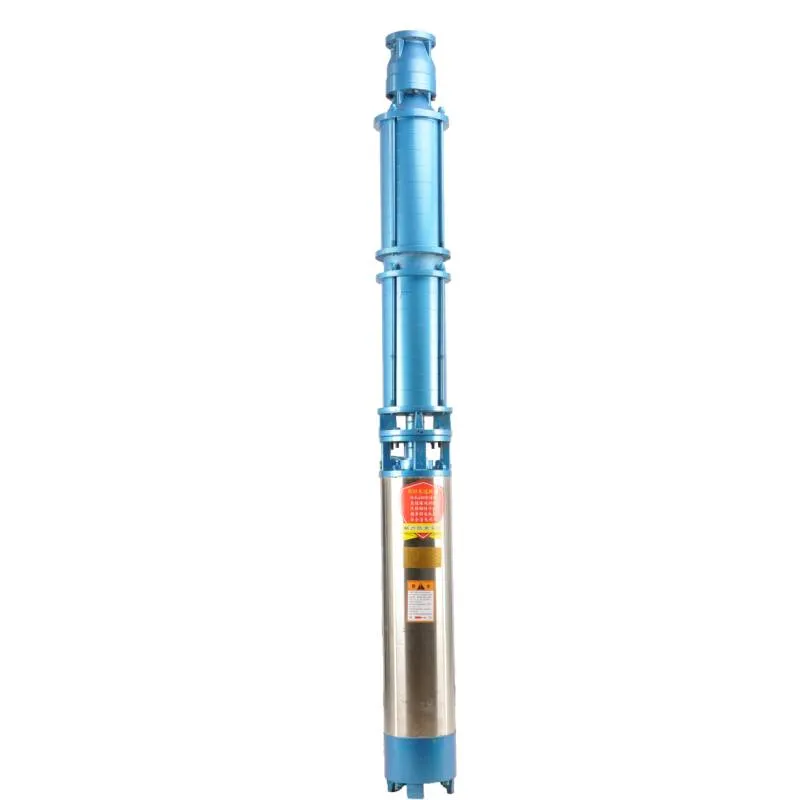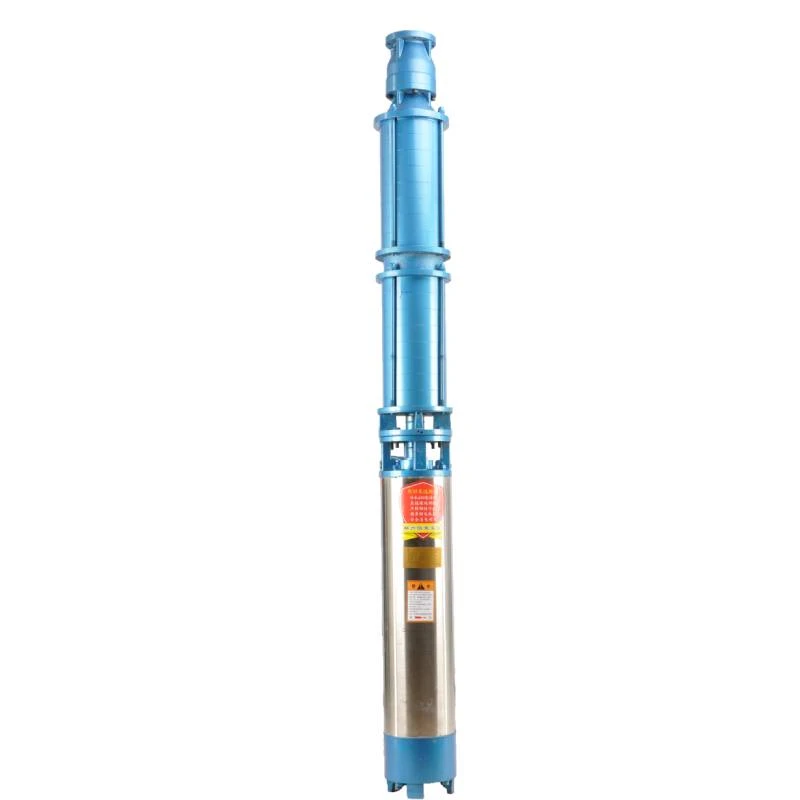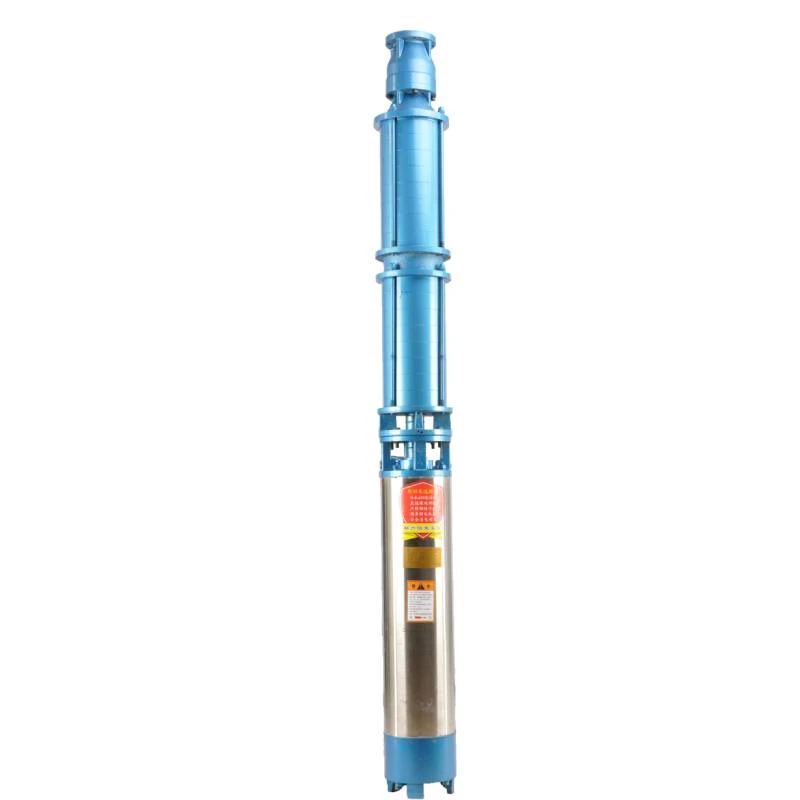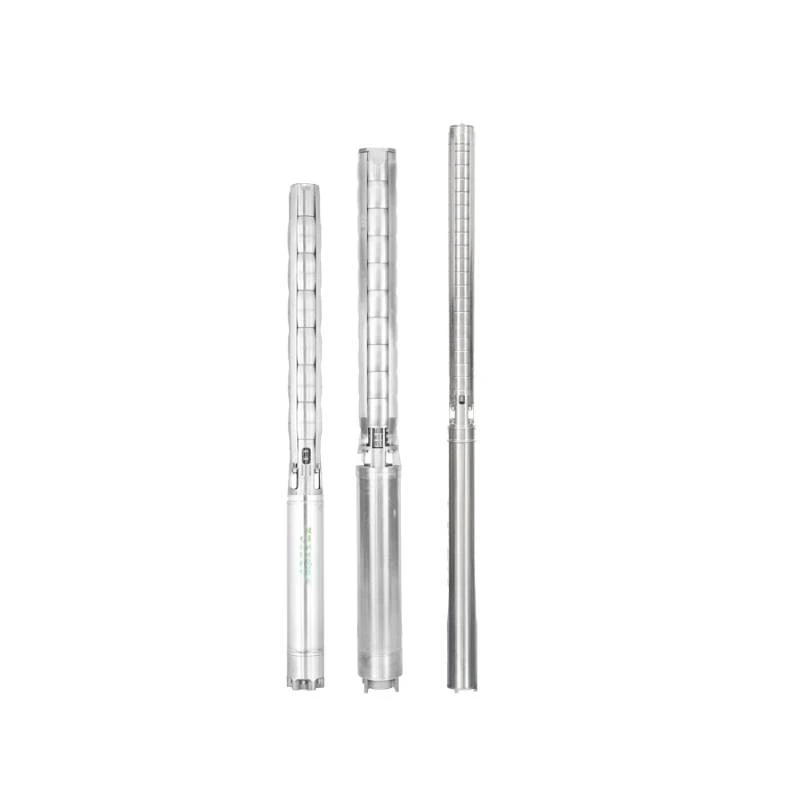Aug . 26, 2025 14:22 Back to list
Borehole Submersible Pumps Price
When planning a groundwater extraction system, one of the first questions customers ask is about the borehole submersible pumps price. This cost varies based on a number of factors, such as the depth of the borehole, the required flow rate, the quality of materials used, and the brand’s reliability.

In general, the borehole submersible pumps price for a domestic system ranges from $150 to $600. For deeper agricultural or industrial applications, prices can exceed $1,000 depending on motor horsepower and discharge head. Stainless steel pumps are more expensive than cast iron ones, but they offer greater resistance to corrosion and are ideal for long-term use in hard water conditions.
Other elements affecting the borehole submersible pumps price include built-in features like thermal overload protection, dry-run safety, and automatic pressure controls. Although the initial investment might seem high, the long service life and efficiency make it a cost-effective solution over time.
Vertical Submersible Pump: Ideal Design for Narrow and Deep Wells
The vertical submersible pump is specially engineered to function efficiently inside narrow boreholes and deep wells. Its long, cylindrical design allows it to fit into tight spaces while still delivering powerful vertical lift. This makes it a preferred choice in situations where surface-mounted or horizontal pumps cannot be installed.
In a vertical submersible pump, the motor and impellers are stacked vertically, allowing for multi-stage water pressurization. This design ensures minimal energy loss over vertical distances and consistent water pressure at the outlet. It's particularly useful in deep irrigation systems, municipal supply lines, and industrial operations where large volumes of water need to be lifted from considerable depths.
A high-quality vertical submersible pump is made from corrosion-resistant materials such as stainless steel or bronze. It can operate in both clean and slightly sandy water, depending on the filtration system installed. Its submersion in water also offers natural cooling, enhancing motor durability and reducing noise during operation.
Submersible Pump for Underground Water Tank: A Space-Saving Solution
Choosing a submersible pump for underground water tank systems is one of the smartest decisions for both residential and commercial water management. Unlike surface pumps that require space and generate noise, these submersible units remain completely hidden and operate quietly beneath the ground.
A typical submersible pump for underground water tank setup involves placing the pump at the base of the tank, from where it lifts water and sends it through delivery pipes under pressure. This is ideal for rainwater harvesting systems, firefighting reserves, or residential supply from underground storage.
These pumps are often equipped with float switches that automatically activate or shut off the pump depending on the water level, which prevents dry running. Additionally, modern models come with pressure sensors that regulate flow for consistent delivery. With simple installation and minimal maintenance, a submersible pump for underground water tank offers efficient, discreet water handling in space-constrained environments.
Comparing Vertical and Horizontal Designs in Borehole Pumps
When looking at borehole pumping options, the vertical submersible pump stands out for its deep well capabilities. Compared to horizontal pumps, vertical designs are more suitable for narrow boreholes and greater depths, thanks to their vertical impeller arrangement and low motor heat accumulation.
Horizontal pumps might be easier to access for maintenance, but they often lack the pressure capacity required for deeper installations. In contrast, a vertical submersible pump can operate silently and effectively in confined spaces, without compromising on flow rate or pressure.
Moreover, vertical configurations minimize pipework bends and friction loss, which translates to lower power consumption. This energy efficiency, combined with the already competitive borehole submersible pumps price, makes them ideal for off-grid farms, commercial complexes, and high-rise buildings that rely on deep well or underground water supply.
Maintenance Tips for Submersible Pump Systems in Tanks and Boreholes
Whether you're installing a submersible pump for underground water tank or a vertical submersible pump for borehole extraction, routine maintenance ensures long-term performance and water purity. Begin by installing filters or screens at the intake to prevent solid particles or sand from entering the system.
Check power cables and connections regularly to detect wear and prevent short circuits. Always monitor pressure and flow rates—any sudden changes could indicate impeller wear or blockages. For borehole systems, pull the pump once every few years for inspection, especially in mineral-heavy or sandy environments.
As borehole submersible pumps price increases with capacity, preserving pump efficiency becomes essential. Avoid dry running by using float switches or level sensors, and clean any clogged discharge nozzles. With proper care, your pump can deliver reliable service for 10–15 years.
Vertical submersible pump FAQs
How much does a borehole submersible pump cost?
The borehole submersible pumps price typically ranges from $150 to $1,200 depending on depth, horsepower, brand, and materials used. Domestic models are more affordable, while industrial units with higher flow rates and stainless steel construction cost more.
What is a vertical submersible pump best used for?
A vertical submersible pump is best used in deep wells, boreholes, or narrow casings where horizontal pumps cannot fit. Its vertical configuration allows for efficient water lifting with minimal energy loss and natural motor cooling due to full submersion.
Can I use a submersible pump for underground water tank applications?
Yes, a submersible pump for underground water tank is ideal. It's compact, quiet, and automatically activates with float or pressure switches. It saves space and is perfect for rainwater harvesting, garden irrigation, or household water supply systems.
What are the main advantages of a vertical submersible pump over horizontal types?
A vertical submersible pump offers better performance in deep or confined spaces. It handles higher pressure with greater energy efficiency and occupies less ground space. It's also naturally cooled by surrounding water, making it more durable over time.
How do I maintain a borehole submersible pump?
To maintain your borehole submersible system, check cables and connections regularly, clean intake screens, avoid dry running with float switches, and inspect pump performance annually. Removing the pump for service every 3–5 years helps detect and prevent mechanical issues early.
-
 Water Filled Submersible PumpA water filled submersible pump is engineered for optimal cooling, eco-friendliness, and high efficiency, especially in applications involving clean or slightly sandy water.Detail
Water Filled Submersible PumpA water filled submersible pump is engineered for optimal cooling, eco-friendliness, and high efficiency, especially in applications involving clean or slightly sandy water.Detail -
 The Ultimate Solution for CleanWhen it comes to efficient water delivery from underground or submerged sources, a submersible pump stands as the go-to solution for homes, farms, ponds, and industrial sites.Detail
The Ultimate Solution for CleanWhen it comes to efficient water delivery from underground or submerged sources, a submersible pump stands as the go-to solution for homes, farms, ponds, and industrial sites.Detail -
 SS Submersible PumpA ss submersible pump (short for stainless steel submersible pump) is the premium choice for environments that demand durability, corrosion resistance, and long-term performance.Detail
SS Submersible PumpA ss submersible pump (short for stainless steel submersible pump) is the premium choice for environments that demand durability, corrosion resistance, and long-term performance.Detail
Aug . 30, 2024 21:44 Back to list
borehole submersible pumps price
The Price Dynamics of Borehole Submersible Pumps
Borehole submersible pumps are essential components in various applications, including agriculture, municipal water supply, and industrial processes. These pumps are designed to operate underwater, making them particularly effective for deep well and borehole pumping. As the demand for reliable water sources grows globally, understanding the pricing dynamics of these pumps becomes increasingly important for consumers and businesses alike.
Understanding Borehole Submersible Pumps
A borehole submersible pump is distinct from other types of pumps due to its design and application. Typically, these pumps consist of a motor, pump stage, and a check valve, all encased in a watertight housing. They are submersed in water, which allows them to efficiently move water from deep underground to the surface. This efficiency paired with their durability makes them a preferred choice for various water extraction needs.
One primary factor affecting the price of borehole submersible pumps is the depth of the installation. Pumps designed for deeper applications tend to be more expensive due to the additional materials and engineering required to ensure durability and effective performance. For instance, a pump for a borehole at 100 meters depth will generally cost more than one meant for a 30-meter borehole. Additionally, the horsepower rating of the pump influences pricing; higher horsepower pumps capable of moving larger volumes of water cost significantly more.
Market Trends Influencing Prices
Several market trends are shaping the pricing strategies for borehole submersible pumps. One significant trend is the adoption of advanced technologies in pump design. Many manufacturers are integrating smart technology into their products, allowing for real-time monitoring and management of pump performance. While this can lead to higher upfront costs, it often results in long-term savings due to improved efficiency and reduced maintenance needs.
borehole submersible pumps price

Moreover, global supply chain conditions play a pivotal role in pump pricing. Fluctuations in raw material costs, shipping delays, and production disruptions can all lead to price increases. Recent global events have highlighted the vulnerabilities of supply chains, contributing to rising costs across many sectors, including manufacturing of pumps.
Regional Pricing Variations
The prices of borehole submersible pumps can also vary significantly from one region to another. In developing countries, where access to clean water is crucial, governments and organizations often subsidize pump costs to encourage installation in rural areas. Conversely, in regions where robust infrastructure exists, prices may reflect market demand and competition among manufacturers.
Furthermore, local regulations and environmental considerations can impact pricing. In areas where regulations are strict regarding energy efficiency and emissions, only compliant pumps can be sold. This may lead to higher prices but also ensures that users are investing in more sustainable technologies.
Conclusion
The market for borehole submersible pumps is dynamic and influenced by various factors, including depth, technology, market trends, and regional conditions. While the initial cost can vary widely, the long-term savings associated with energy efficiency and maintenance are crucial factors for consumers to consider. As the demand for sustainable water solutions continues to rise, understanding the underlying pricing dynamics of borehole submersible pumps will empower buyers to make informed decisions that meet their unique needs. As technological advancements continue to emerge, the future may bring even more efficient and cost-effective solutions to the market.
-
 Water Filled Submersible PumpA water filled submersible pump is engineered for optimal cooling, eco-friendliness, and high efficiency, especially in applications involving clean or slightly sandy water.Detail
Water Filled Submersible PumpA water filled submersible pump is engineered for optimal cooling, eco-friendliness, and high efficiency, especially in applications involving clean or slightly sandy water.Detail -
 The Ultimate Solution for CleanWhen it comes to efficient water delivery from underground or submerged sources, a submersible pump stands as the go-to solution for homes, farms, ponds, and industrial sites.Detail
The Ultimate Solution for CleanWhen it comes to efficient water delivery from underground or submerged sources, a submersible pump stands as the go-to solution for homes, farms, ponds, and industrial sites.Detail -
 SS Submersible PumpA ss submersible pump (short for stainless steel submersible pump) is the premium choice for environments that demand durability, corrosion resistance, and long-term performance.Detail
SS Submersible PumpA ss submersible pump (short for stainless steel submersible pump) is the premium choice for environments that demand durability, corrosion resistance, and long-term performance.Detail
